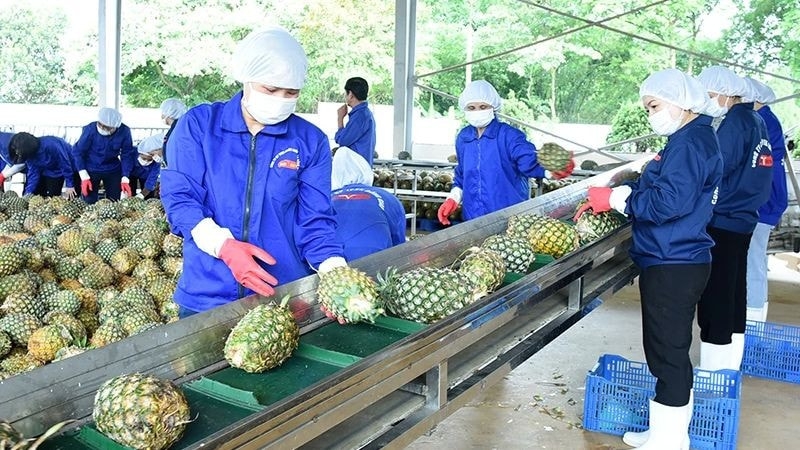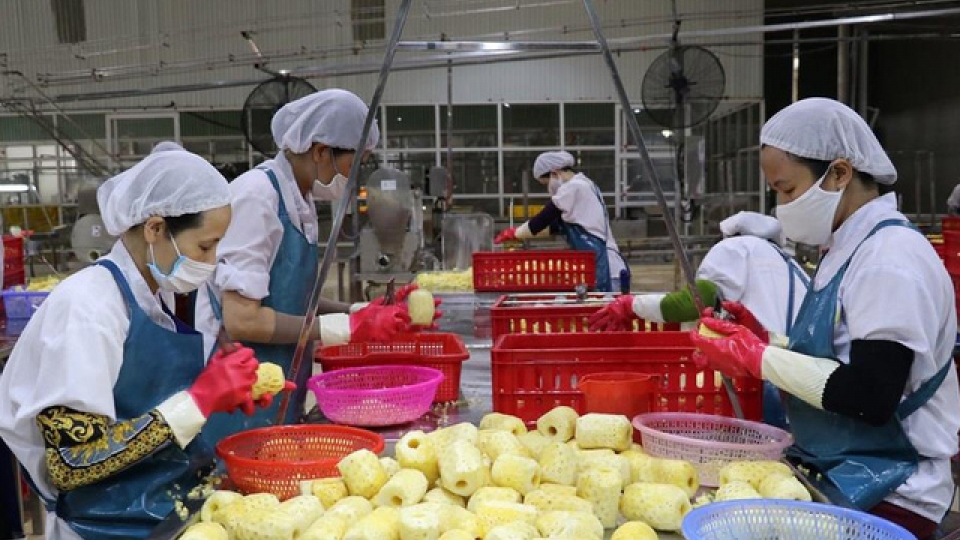Vietnamese pineapple exports in August skyrocket over 400%
VOV.VN - Pineapple has emerged as one of Vietnam’s leading agricultural export products, with its export value in August alone soaring over 400% to US$950,000, according to the Vietnam Customs.

This sharp increase brought the total export value for the first nine months of the year to US$8 million, up 114% compared to the same period last year.
The Vietnamese juicy fruit has made their way into over 100 countries and territories, with the European Union emerging as the largest market, accounting for nearly 48% of total export revenue. Within the EU, Russia leads as the top importer. The United States follows as the second-largest market, contributing around 20% of the total export value.
Vietnam enjoys a competitive edge in the segment of deep-processed pineapple products, with three main varieties grown nationwide, namely Queen, Cayenne, and MD2. Of these, MD2 is the most prominent, making up 50–55% of the global market and as much as 70–75% of the EU market, thanks to its superior taste and quality.
At high-end markets like Japan, this Vietnamese fruit can fetch up to US$4,000 per tonne, US$1,000 to US$1,200 higher than in the EU or US, reflecting both strong demand and high regard for the fruit’s quality.
Apart from fresh pineapples, processed products, particularly pineapple juice, have made significant contributions to overall export earnings. Vietnam exports processed pineapple products to key markets including the EU, Russia, the US, the Republic of Korea, and others.
However, Vietnam’s processed pineapple products face intense competition from major global exporters, with low processing efficiency driving up production costs and prices. In addition, the fruit is not yet officially exported to the Chinese market, mainly through unofficial channels.
According to research, the global pineapple market was valued at US$28.79 billion in 2024 and is projected to grow at a compound annual growth rate (CAGR) of 6.33%, reaching US$ 39.13 billion by 2029. With Europe and North America accounting for half of global consumption, there remains ample room for export expansion in the time ahead.



